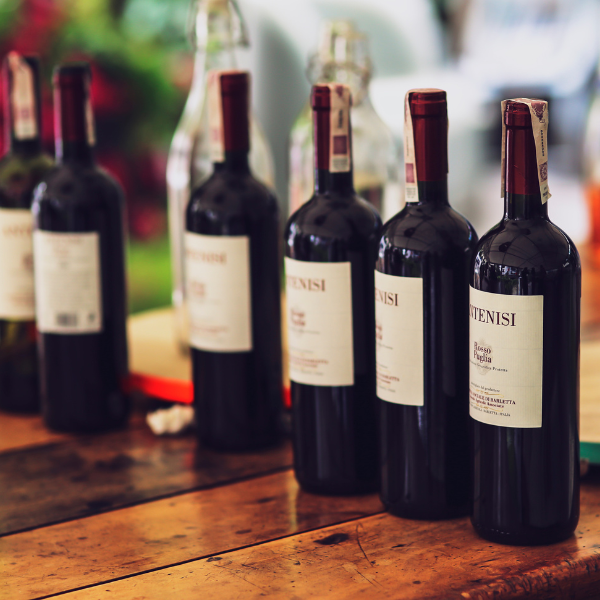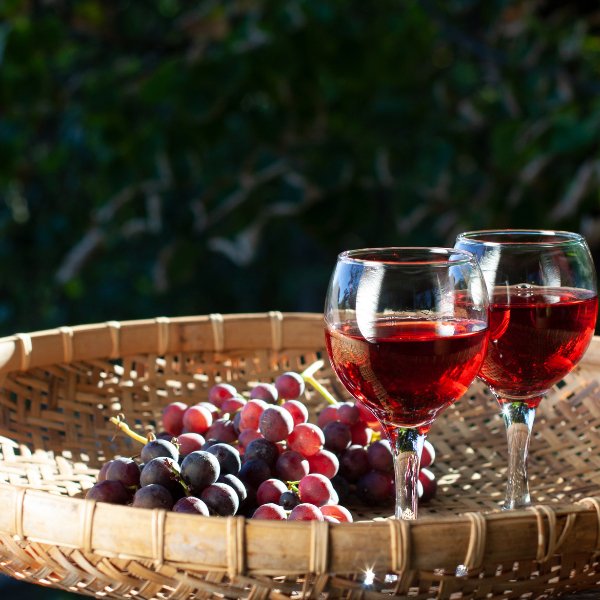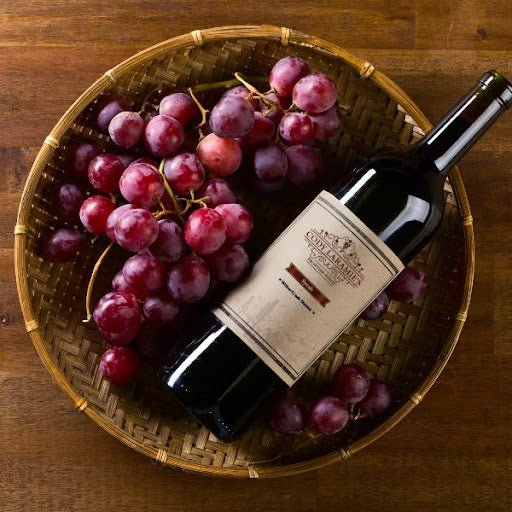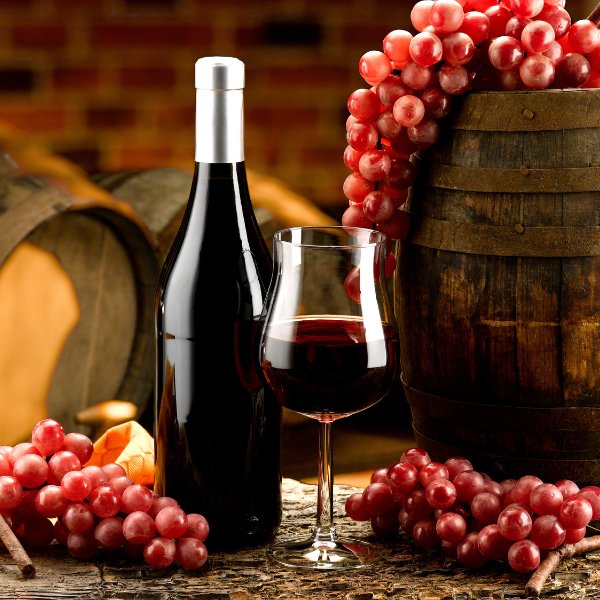In the fiercely competitive world of winemaking, custom wine labels have become an indispensable tool for branding and marketing. More than just a source of essential information, these labels serve as a visual narrative, telling the story of the wine, showcasing its quality, and captivating potential buyers. In this guide, we’ll delve into the latest trends in custom wine labels and provide expert tips on designing personalized labels that not only stand out on the shelf but also resonate with consumers on a deeper level.
Understanding The Importance Of Custom Wine Labels
Wine labels are more than just decorative elements; they play a crucial role in a consumer’s purchasing decision. A well-designed custom wine label can:

1. Enhance Brand Recognition: A unique and attractive label helps build brand identity and ensures that your wine stands out among the competition.
2. Communicate Quality: High-quality labels often indicate a high-quality product, influencing consumer perception.
3. Provide Essential Information: Labels provide important details such as grape variety, vintage, region, and alcohol content, helping consumers make informed choices.
Key Elements Of Effective Wine Labels
To create an effective custom wine label , it’s important to focus on several key elements:
Brand Name and Logo: Clearly display your brand name and logo to build recognition and trust.
Color Scheme: Choose colors that reflect your brand’s identity and the wine’s characteristics. For example, earthy tones might be suitable for a rich red wine, while bright colors could highlight a crisp white.
Typography: Select fonts that are legible and align with your brand’s style. Elegant fonts can convey sophistication, while bold fonts may indicate a robust wine.
Imagery and Graphics: Incorporate images and graphics that tell the story of the wine. This could include vineyard landscapes, historical motifs, or artistic illustrations.
Label Shape and Size: Experiment with different shapes and sizes to find a unique look that differentiates your wine on the shelf.
Trends In Custom Wine Labels
Minimalist Designs
One of the prominent trends in custom wine labels is the shift towards minimalist designs. Minimalism focuses on simplicity and clarity, using clean lines, simple typography, and limited color palettes. This trend appeals to modern consumers who appreciate understated elegance and sophistication.
Example: A minimalist wine label might feature a plain white background with the brand name in a sleek, sans-serif font, accompanied by a small, elegant logo.
Sustainable and Eco-Friendly Labels
With growing environmental awareness, sustainable and eco-friendly wine labels are gaining popularity. Wineries are adopting practices that reduce their environmental impact, and this includes using recyclable or biodegradable label materials and eco-friendly inks.
Example: An eco-friendly wine label might be made from recycled paper and printed with soy-based inks. This not only appeals to environmentally conscious consumers but also reflects the winery’s commitment to sustainability.
Advanced Customization Techniques
Modern technology has revolutionized the way custom wine labels are designed and produced. Here are some advanced customization techniques that are shaping the industry:

Digital Printing
Digital printing offers flexibility and precision, allowing for high-quality, cost-effective production of custom wine labels in small batches. This technique enables wineries to experiment with different designs and make quick adjustments without incurring significant costs.
Benefits: Quick turnaround times, reduced waste, and the ability to print on demand.
Embossing and Foiling
Embossing and foiling add texture and shine to wine labels, creating a premium look and feel. These techniques involve raising parts of the label (embossing) or adding metallic elements (foiling) to highlight specific areas such as the brand name or logo.
Example: A wine label with gold foil accents on the brand name and embossed grapevine patterns can convey luxury and attention to detail.
Augmented Reality (AR) Labels
Augmented Reality (AR) labels are an innovative trend that enhances consumer engagement. By scanning the label with a smartphone, consumers can access interactive content such as virtual tours of the vineyard, winemaker interviews, or food pairing suggestions.
Example: An AR label that brings to life a virtual winemaker who explains the wine’s production process can create a memorable and immersive experience for consumers.
Personalized Wine Labels for Special Occasions

Personalized wine labels are a popular choice for special occasions such as weddings, anniversaries, and corporate events. These labels allow for customization with names, dates, messages, and unique designs that reflect the event’s theme.
Weddings: Custom wine labels featuring the couple’s names, wedding date, and a romantic design can serve as elegant keepsakes for guests.
Corporate Gifts: Personalized wine labels with the company’s logo and a custom message can enhance corporate gifting, making the gesture more personal and memorable.
Compliance and Regulatory Considerations
Adhere to industry regulations and standards when designing custom wine labels. This ensures that your labels are attractive and compliant with legal requirements.
Mandatory Information
Wine labels must include specific information such as:
- Alcohol Content: Clearly state the alcohol by volume (ABV) percentage.
Net Content: Indicate the volume of wine in the bottle.
Producer Information: Include the name and address of the winery or producer.
Appellation: Identify the wine’s geographical origin if applicable.
Label Approval
In many countries, regulatory authorities must approve wine labels before they can be used. This process ensures that the labels meet all legal requirements and do not contain misleading information.
Drawing Inspiration from Successful Wine Labels
Examining successful wine labels can provide valuable insights and inspiration for your custom wine label designs. Here are a few notable examples:
Château Mouton Rothschild
Château Mouton Rothschild is renowned for its innovative and artistic wine labels. Each vintage features a unique design created by a famous artist, making the labels highly collectible.
Key Takeaway: Collaborating with artists to create one-of-a-kind labels can elevate the perceived value of your wine and attract collectors.
19 Crimes
19 Crimes has gained popularity for its interactive AR labels that bring the stories of historical criminals to life. This engaging approach not only captures consumer interest but also reinforces the brand’s narrative.
Key Takeaway: Utilizing AR technology to create interactive labels can enhance consumer engagement and differentiate your brand.
Tips for Designing Your Own Custom Wine Labels
Creating a custom wine label involves a blend of creativity, strategic thinking, and attention to detail. Here are some tips to guide you through the process:
Understand Your Target Audience
Knowing your target audience is crucial for designing a label that resonates with them. When crafting your design, consider factors such as age, preferences, and purchasing behavior.
Example: If your target audience is young, trendy consumers, opt for bold colors and modern typography. For a more mature audience, classic and elegant designs may be more appealing.
Tell Your Brand’s Story
Your wine label should tell a story that reflects the values and history of your brand. This can be achieved through imagery, typography, and descriptive text.
Example: A family-owned winery might feature a vintage photograph of the vineyard on the label, along with a brief history of the winery’s heritage.
Utilizing Professional Design Services
While designing wine labels in-house is possible, working with professional designers can ensure a polished and impactful result. Professional designers have the expertise to create labels that are visually appealing and compliant with industry standards.
Benefits: Access to advanced design tools, knowledge of current trends, and the ability to produce high-quality, print-ready files.
Implementing Your Custom Wine Labels
Once your custom wine label design is finalized, it’s time to move into production and implementation. Here are the key steps:
Choose the Right Printing Partner
Selecting a reliable printing partner is essential for ensuring the quality and consistency of your custom wine labels. Look for a printer with experience in the wine industry and the capability to handle your specific requirements.
Considerations: Material options, print quality, turnaround times, and cost.
Conduct Quality Control
Before the full production run, conduct a thorough quality control check to ensure that the labels meet your standards. This includes checking for color accuracy, print clarity, and adherence to design specifications.
Tip: Request a sample print run to identify any potential issues before committing to large-scale production.
Marketing Your Custom Wine Labels
Effective marketing can amplify the impact of your custom wine labels and drive sales. Here are some strategies to consider:
Leverage Social Media
Social media platforms are powerful tools for showcasing your custom wine labels and engaging with consumers. Share high-quality images of your labels, behind-the-scenes content from the design process, and stories about the inspiration behind the designs.
Tip : Use relevant hashtags and collaborate with influencers to reach a broader audience.
Offer Limited Edition Releases
Creating limited-edition wine labels can generate excitement and urgency among consumers. In your marketing campaigns, highlight the exclusivity and unique features of these labels.
Example: A limited edition wine label designed by a renowned artist can attract collectors and connoisseurs.
Monitor And Adjust
Continuously monitor the performance of your custom wine labels and gather feedback from consumers. Use this information to make adjustments and improvements for future label designs.
Metrics to Track: Sales data, customer reviews, social media engagement, and website traffic.
Emerging Trends In Personalized Wine Labels
As the wine industry continues to evolve, personalized wine labels are becoming more sophisticated and tailored to meet consumer demands. Here are some emerging trends that are shaping the future of wine labeling:
Interactive Labels with Augmented Reality (AR)
- Augmented Reality (AR) labels are set to revolutionize consumer interaction with wine bottles. By scanning the label with a smartphone, consumers can access immersive experiences that go beyond static information.
- Virtual Tastings: AR labels can offer virtual tastings, where consumers can follow along with a sommelier or winemaker as they describe the tasting notes and characteristics of the wine. Storytelling: Brands can use AR to tell the story of the vineyard, the winemaking process, and the people behind the wine, creating a deeper connection with the consumer.
Smart Labels with NFC Technology
- Near-field communication (NFC) technology is being integrated into wine labels to enhance consumer interaction and provide wineries with valuable data.
- Consumer Engagement: NFC-enabled labels allow consumers to tap their smartphone on the bottle to access detailed product information, reviews, and even loyalty programs.
- Supply Chain Transparency: NFC technology can track the journey of the wine from vineyard to table, ensuring authenticity and providing consumers with peace of mind regarding the provenance of their wine.
Personalization Through Data-Driven Insights
Data analytics is crucial in personalizing wine labels to match consumer preferences. By leveraging data, wineries can create labels that resonate more effectively with their target audience.
Customer Preferences
Analyzing consumer data helps wineries understand what label designs, colors, and themes are most appealing to different segments of their audience.
Targeted Designs: For instance, data might reveal that younger consumers prefer bold, contemporary designs, while older demographics favor classic, elegant labels.
Seasonal Variations: Wineries can use data to adjust label designs for seasonal promotions, such as festive themes for holidays or summer-inspired designs for warm-weather wines.
Feedback Loops
Establishing feedback loops with consumers allows wineries to continuously refine and improve their label designs.
Surveys and Reviews: Gathering feedback through surveys and online reviews helps wineries understand what elements of the label are working and what needs improvement.
Monitoring social media interactions provides real-time data on how consumers react to different label designs.
Eco-Friendly Innovations In Wine Labeling
Sustainability remains a key concern for both consumers and producers, driving innovation in eco-friendly wine labeling.

-
Recycled Materials
Using recycled materials for wine labels is an effective way to reduce environmental impact while maintaining high-quality aesthetics.
Paper and Plastics: Labels made from recycled paper and plastics not only reduce waste but also appeal to environmentally conscious consumers.
Innovative Materials: Some wineries are exploring the use of alternative materials such as hemp, bamboo, and even grape waste to create sustainable labels.
-
Water-Based and Soy-Based Inks
Traditional inks can be harmful to the environment due to their chemical components. Water-based and soy-based inks offer a greener alternative.
Reduced VOC Emissions: These eco-friendly inks emit fewer volatile organic compounds (VOCs), contributing to a healthier environment.
Vibrant Colors: Despite being eco-friendly, water-based and soy-based inks can produce vibrant, high-quality prints that enhance the visual appeal of wine labels.
Customization For Niche Markets
Personalized wine labels are increasingly being tailored to meet the demands of niche markets, offering unique opportunities for wineries to differentiate themselves.
Organic And Natural Wines
The growing interest in organic and natural wines has led to specialized labeling that highlights these attributes.
Certifications and Badges: Labels for organic wines often feature certification badges from recognized organizations, assuring consumers of the wine’s organic status.
Natural Aesthetics: Labels for natural wines might use earthy colors and rustic designs to convey their connection to natural winemaking processes.
Limited Editions and Collaborations
Limited edition wines and collaborations with artists, chefs, or other brands are becoming popular, offering unique labeling opportunities.
Exclusive Designs: Limited edition labels can feature exclusive designs that reflect the collaboration or special release, creating a sense of exclusivity and urgency.
Collector’s Items: These unique labels can turn wine bottles into collector’s items, appealing to enthusiasts and driving higher sales.
Future Innovations In Wine Labeling
The future of wine labeling holds exciting possibilities as technology and consumer preferences continue to evolve.
Digital Labels
Digital labels that change dynamically based on environmental factors or user interaction are an emerging innovation.
Temperature-Sensitive Labels: These labels change color or display messages based on the temperature of the wine, indicating the optimal serving temperature.
User-Interactive Displays: Labels with digital screens can display changing information, such as pairing suggestions or promotional offers, based on user interaction.
Sustainable Packaging Integration
Integrating sustainable practices into the entire packaging process, not just the label, is a growing trend.
Lightweight Bottles: Using lightweight, recyclable bottles reduces the carbon footprint and complements eco-friendly labels.
Minimal Packaging: Emphasizing minimal packaging that uses fewer resources aligns with consumer preferences for sustainable products.
Way Forward
In summary, custom wine labels are more than just a design—they're a powerful tool for storytelling, brand differentiation, and connecting with consumers. As the wine industry evolves, embracing trends like sustainability and innovative customization will be key to crafting labels that captivate and resonate. By prioritizing quality, creativity, and authenticity, wineries can create labels that not only catch the eye but also leave a lasting impression, fueling both customer loyalty and business growth.






